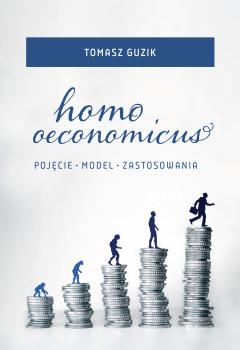Homo oeconomicus : pojęcie, model, zastosowania
Keywords:
homo oeconomicus, Economic Analysis of Law, Tax LawSynopsis
The book discusses two research issues. The first one consists in reconstructing the model of the economic man, which is based on the classically understood theory of rational choice. The second problem comes down to proving that the normative model of an individual’s activity reconstructed that way can be used in the law at various levels. The thesis consists of three parts. The first part contains an overview of the philosophical and scientific achievements in the field of rationality as well as of the mechanisms of human decision-making. The section provides an in-depth analysis of modern concepts of rationality along with contemporary approaches to homo oeconomicus (from the representatives of Scottish Enlightenment, through Marginal Revolution, to the Neoclassical Economics and the Austrian School). In addition, contemporary decision-making models, i.e. behavioural, psychological and neuroscientific models are also discussed. The second part of the book is devoted to the reconstruction of the postulated model. Ultimately, it consists of three components: instrumental rationality, utility, and egoism. The last part focuses on presenting various possibilities of using the reconstructed model in law. In particular, its applications in the areas of creating, interpreting and applying law are demonstrated. Moreover, acting as a paradigm of human action, the concept of homo oeconomicus can be used to enhance conducting economic analysis of selected fields of law. The book, by adopting the assumption that consumers and taxpayers are homines oeconomici, demonstrates what requirements tax and consumer law should meet in order to be economically effective. The summary gathers the conclusions from the whole work.
Chapters
-
TABLE OF CONTENTS
-
Wstęp .......... 9
-
CZĘŚĆ PIERWSZA. POJĘCIE
-
1. Wprowadzenie .......... 17
-
2. Koncepcja rozumności w czasach przednowożytnych .......... 19
-
3. Szkockie oświecenie. W kierunku idei homo oeconomicus .......... 23
-
4. Współczesny model homo oeconomicus .......... 37
-
5. Najnowsze modele podejmowania decyzji .......... 55
-
6. Wnioski .......... 87
-
CZĘŚĆ DRUGA. MODEL .......... 89
-
1. Normatywna wersja koncepcji homo oeconomicus. Krytyka oraz uzasadnienie stanowiska .......... 93
-
2. Element formalny .......... 105
-
3. Element materialny .......... 149
-
4. Model homo oeconomicus w prawie. Rekonstrukcja i analiza .......... 163
-
5. Wnioski .......... 175
-
CZĘŚĆ TRZECIA. ZASTOSOWANIA .......... 177
-
1. Model homo oeconomicus a ekonomiczna analiza prawa .......... 181
-
2. Tworzenie prawa .......... 185
-
3. Wykładnia prawa .......... 195
-
4. Stosowanie prawa .......... 207
-
5. Paradygmatyczne zastosowania modelu homo oeconomicus w prawie konsumenckim .......... 217
-
6. Paradygmatyczne zastosowania modelu homo oeconomicus w prawie podatkowym .......... 245
-
7. Wnioski .......... 261
-
Zakończenie .......... 263





